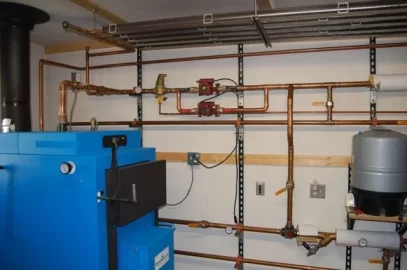On Wednesday I changed from my Air compression expansion tank to Bladder tanks. I set the tanks at 12psi ran water into the system with my auto fill and bled some air and then shut off the auto fill.
I did a burn and built ran the storage up to 182/158 I was sitting at 22psi. I went to work my 24 hour shift yesterday and the storage was used to heat the house.
I came home today and found the tank at 144/120 and the pressure in the system was 0.
I checked the bladder tanks and they are at 17psi so some water must be sitting on the top of bladders.
I turned on auto fill and it ran for maybe 20 seconds. Went back to boiler and bled air from the piping and storage tank.
I can see no visible water leaks.
So what do you think, was there trapped air in the system or bigger problem?
gg
I did a burn and built ran the storage up to 182/158 I was sitting at 22psi. I went to work my 24 hour shift yesterday and the storage was used to heat the house.
I came home today and found the tank at 144/120 and the pressure in the system was 0.
I checked the bladder tanks and they are at 17psi so some water must be sitting on the top of bladders.
I turned on auto fill and it ran for maybe 20 seconds. Went back to boiler and bled air from the piping and storage tank.
I can see no visible water leaks.
So what do you think, was there trapped air in the system or bigger problem?
gg




